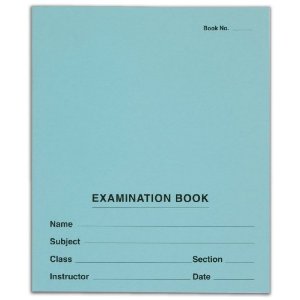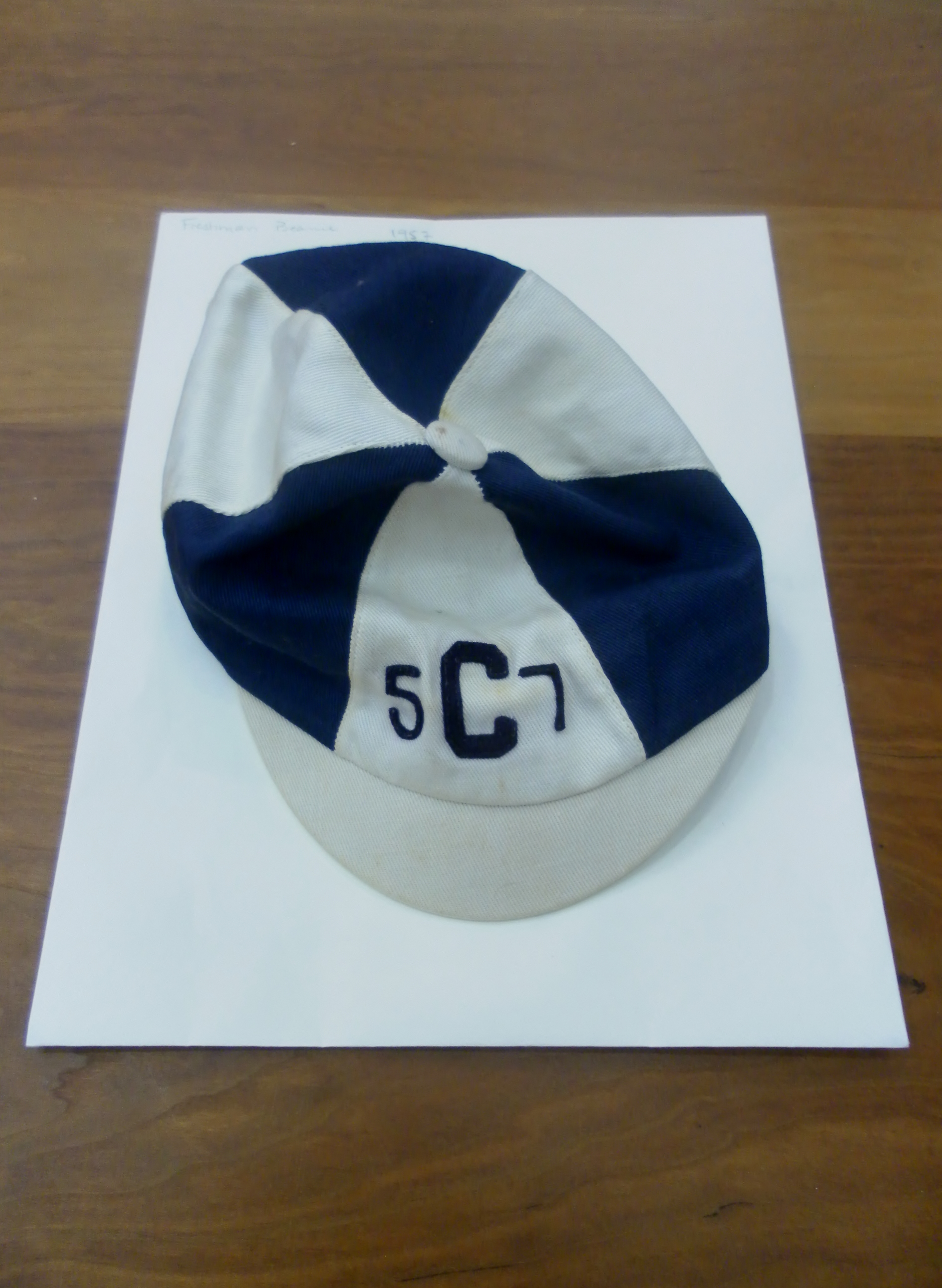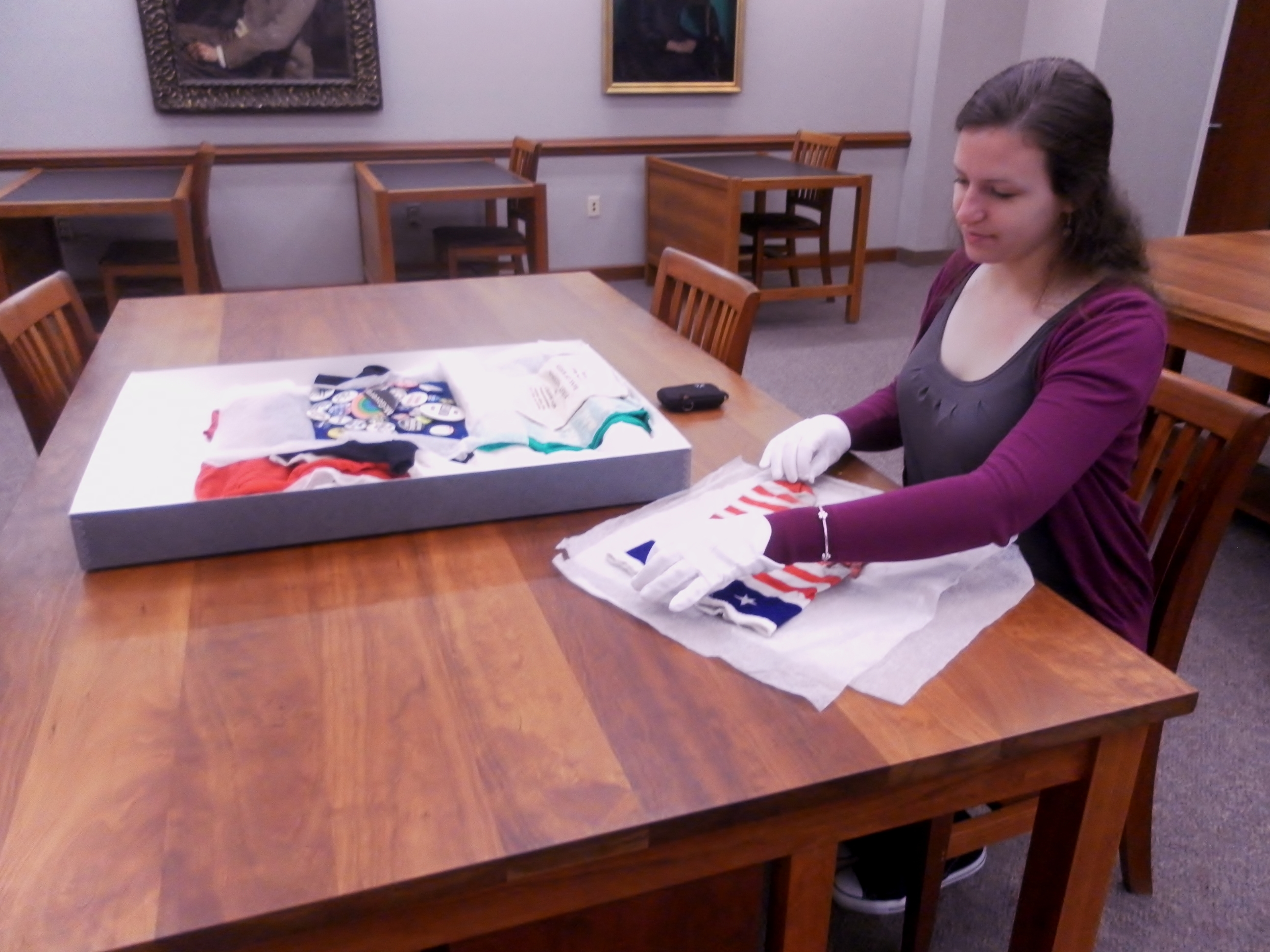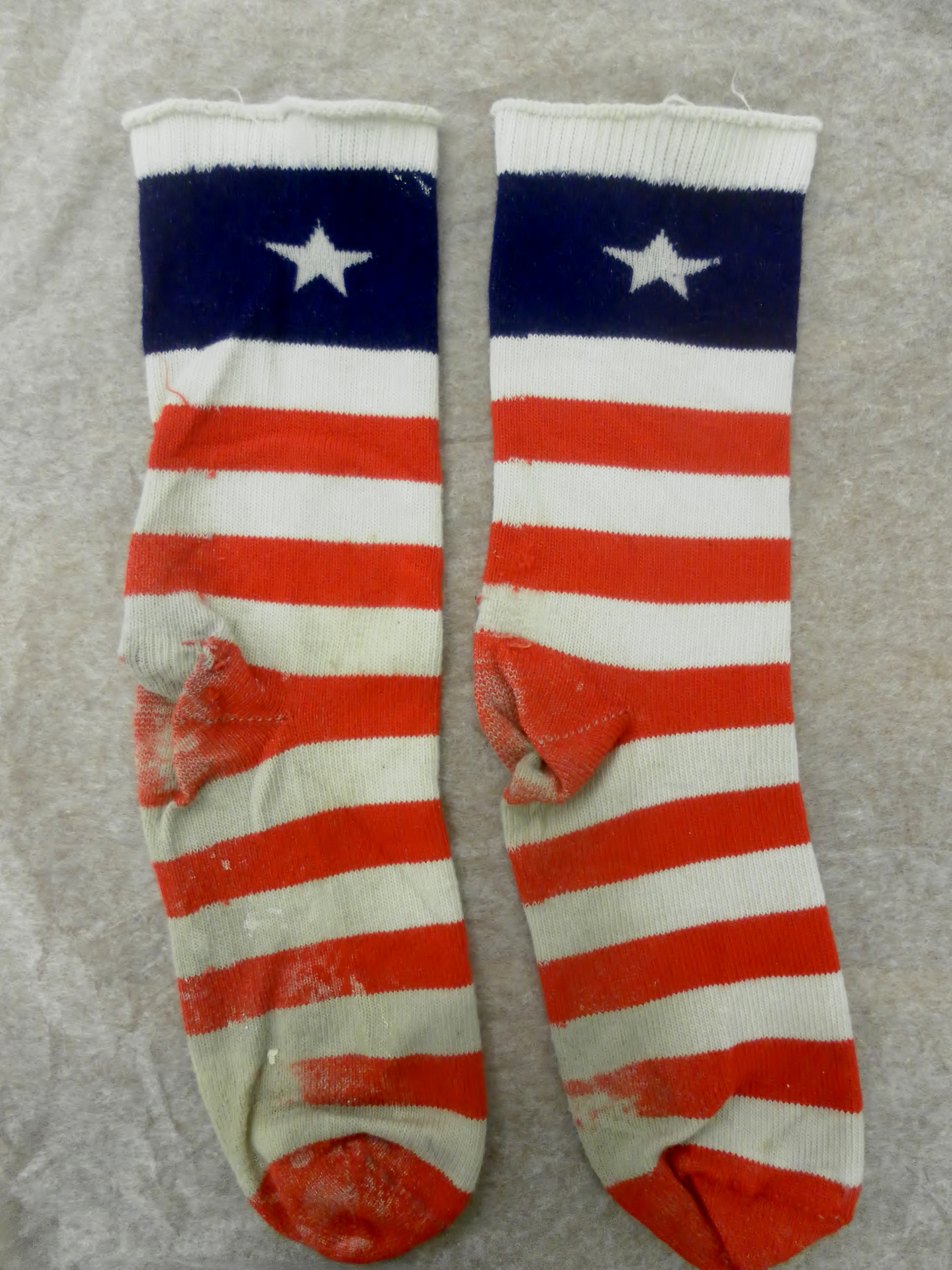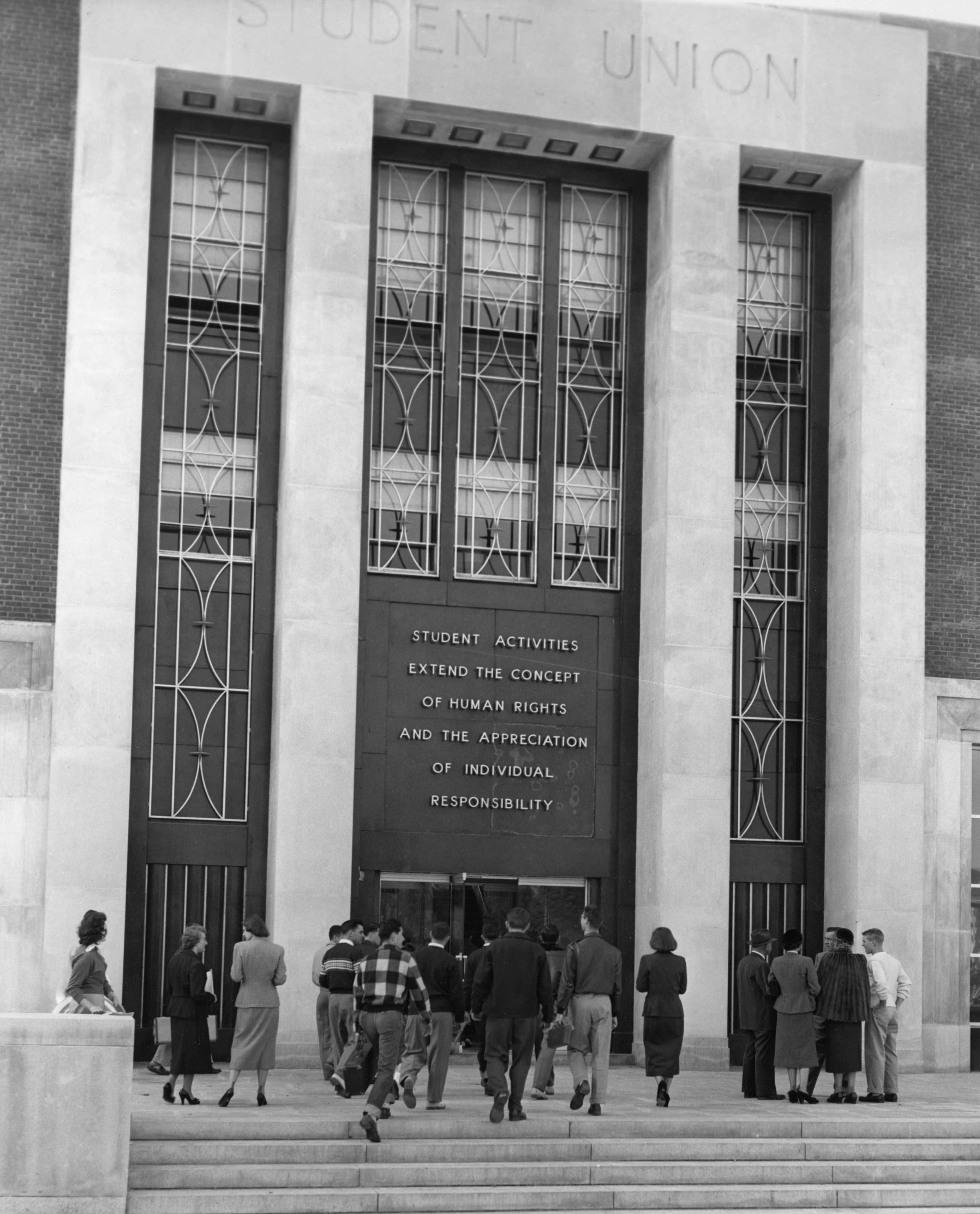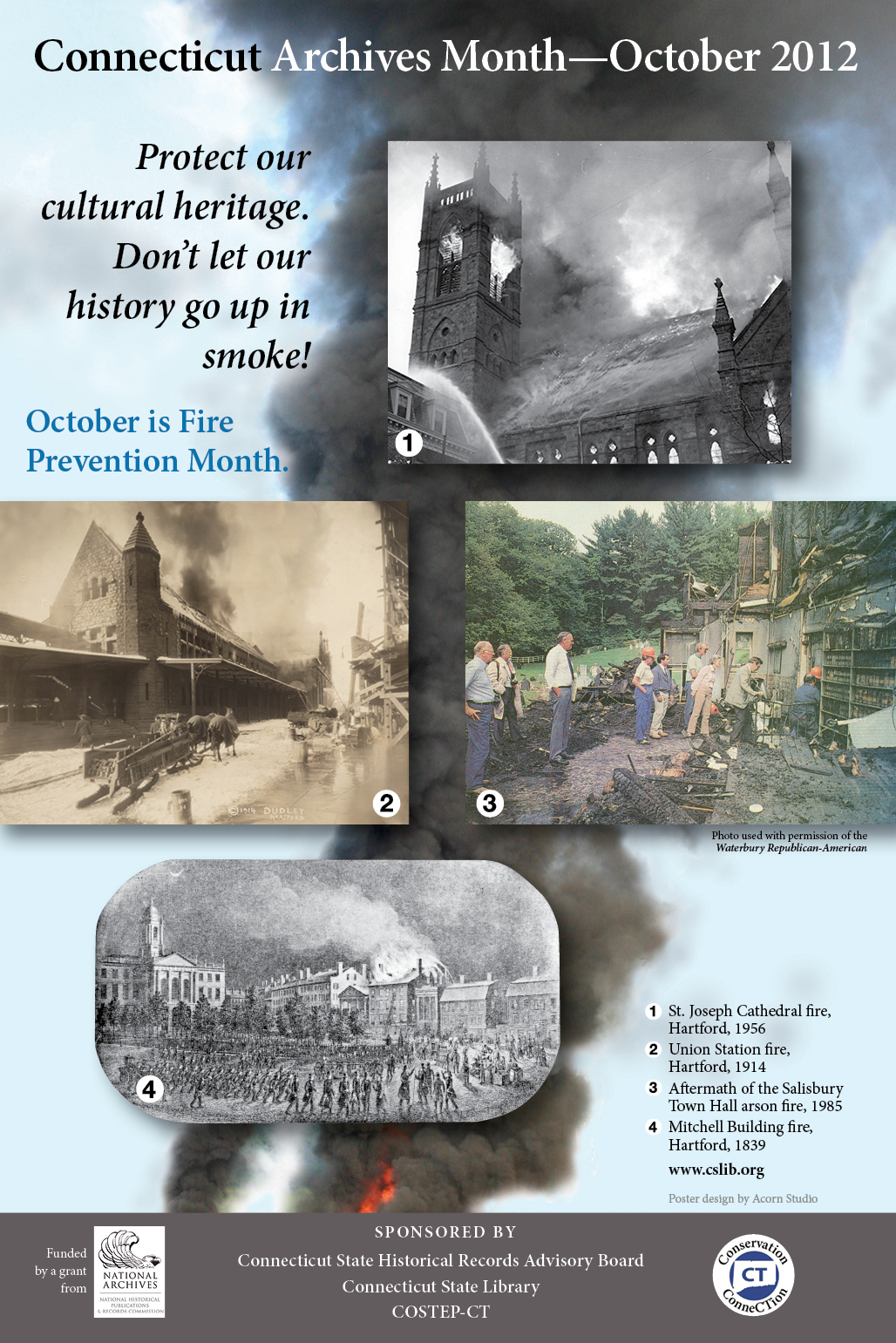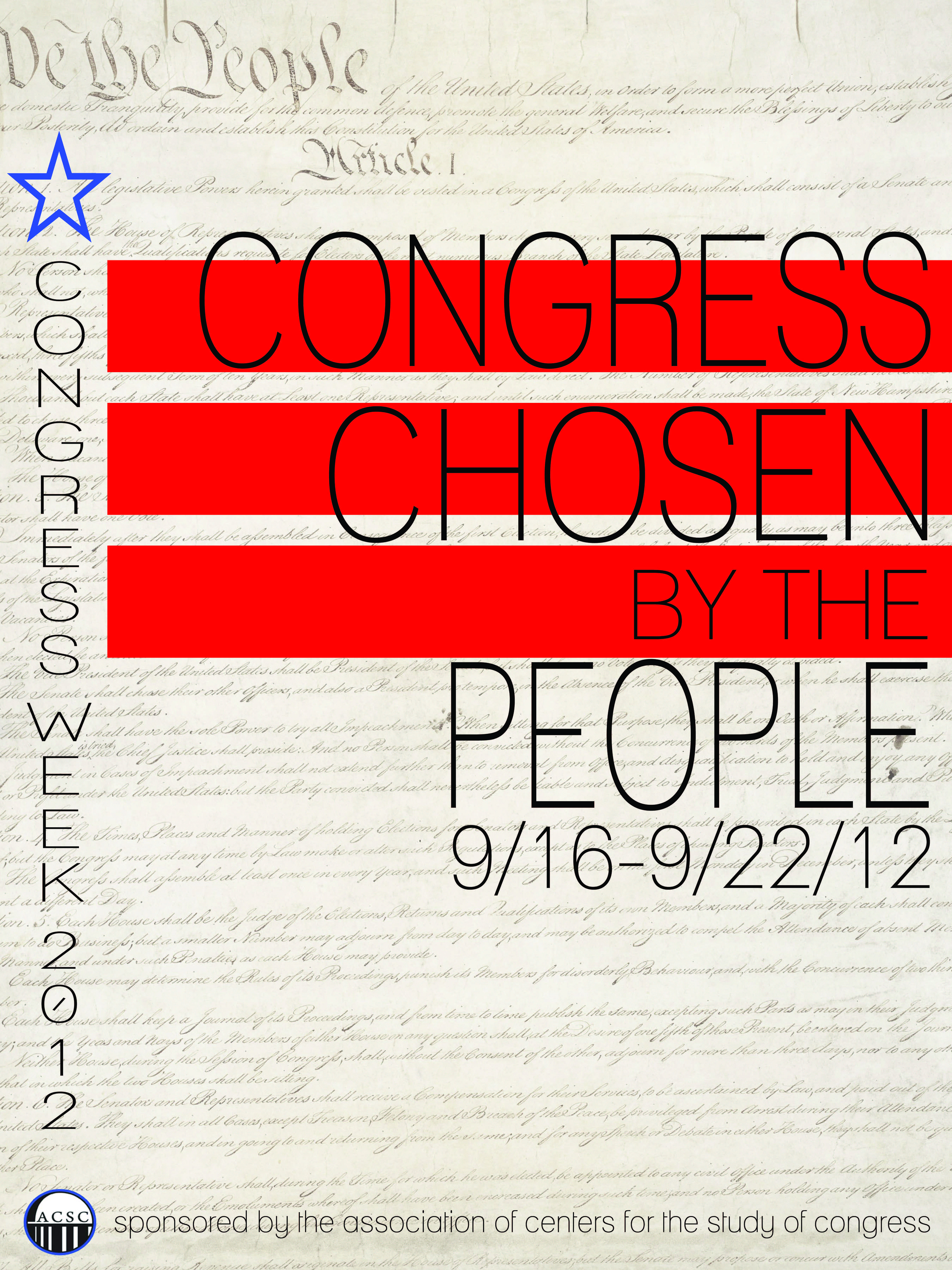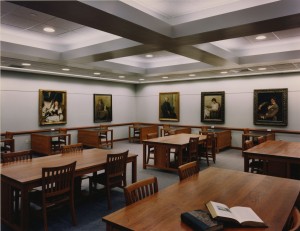
John P. McDonald Reading Reading Room, Archives & Special Collections
Below is a list of collections that are now open and available for research (links to finding aids provided), arranged by broad collecting area. Researchers are encouraged to contact the staff with any questions.
Business, Railroad & Labor Collections:
AFSCME, Local 1303 Records https://archivessearch.lib.uconn.edu/repositories/2/resources/49
- Articles related to a strike by employees of the Milford Mental Health Clinic in 1983.
Bartholomew Alpress & Co. Records https://archivessearch.lib.uconn.edu/repositories/2/resources/123
- Record books of the saw mill located in Bristol, Connecticut.
Iron Workers Association of Reading, PA https://archivessearch.lib.uconn.edu/repositories/2/resources/924
- Notebook with handwritten constitution and by-laws of association.
Norwich Typographical Union Records https://archivessearch.lib.uconn.edu/repositories/2/resources/84
- Financial records of the Union.
Providence & Worcester Railroad Records https://archivessearch.lib.uconn.edu/repositories/2/resources/832
- Treasurers accounts, treasury books, superintendents letters, deeds, and other administrative files.
William B. Young Collection of the Connecticut Co. https://archivessearch.lib.uconn.edu/repositories/2/resources/911
- Correspondence, maps, photographic images, car rosters, administrative reports, and other materials about trolley and street railroad cars and the history of the Connecticut Company.
Children’s Literature Collections:
Martha G. Alexander Papers https://archivessearch.lib.uconn.edu/repositories/2/resources/851
- Manuscripts, dummies, and proofs for a significant number of published works by noted children’s author.
Paul W. Catanese Papers https://archivessearch.lib.uconn.edu/repositories/2/resources/899
- Manuscripts and correspondence associated with two of Mr. Catanese’s books, “The Brave Apprentice” and “The Thief and the Beanstalk.”
Bonnie Christensen Papers https://archivessearch.lib.uconn.edu/repositories/2/resources/71
- Original illustrations, woodcut blocks, research materials, and manuscript materials associated with the children’s author.
Stephanie Clayton Collection of Little Red Riding Hood https://archivessearch.lib.uconn.edu/repositories/2/resources/914
- Assorted realia related to, and depicting, the Little Red Riding Hood Fairy Tale. The collection contains stuffed animals, dolls, porcelain figures, and a clock.
Joanna Cole Papers https://archivessearch.lib.uconn.edu/repositories/2/resources/852
- Editorial correspondence, manuscripts and sketches of Cole, author of the Magic School Bus series.
Mary DePalma Papers https://archivessearch.lib.uconn.edu/repositories/2/resources/873
- Materials used to create several of Ms. DePalma’s works, such as My Chair, The Strange Egg, Many Millions of Leaves, A Grand Old Tree, The Perfect Gift, and The Nutcracker Doll.
Mary Greenwalt Papers https://archivessearch.lib.uconn.edu/repositories/2/resources/919
- Illustrations of her works on the lives of famous composers published between 1936 and 1946.
Mary Ann Hoberman Papers https://archivessearch.lib.uconn.edu/repositories/2/resources/115
- Manuscripts, original artwork, poetry, and various administrative records associated with the work of award winning children’s author.
Nonny Hogrogian Papers https://archivessearch.lib.uconn.edu/repositories/2/resources/35
- Illustrations, drawings, and proofs of works by children’s book author and illustrator.
Kathy Jakobsen Papers https://archivessearch.lib.uconn.edu/repositories/2/resources/853
- Artwork, audio visual materials, books, color slides, correspondence, drawings, illustrations, photographs, posters, publications, sketches, and videocassettes documenting the work of one of America’s premier folk artists.
David Katz Papers https://archivessearch.lib.uconn.edu/repositories/2/resources/896
- Materials relating to Katz’s publication You can be a woman engineer published in 1995.
Judith Liberman Papers https://archivessearch.lib.uconn.edu/repositories/2/resources/850
- Correspondence and original manuscript materials of artist and author.
Arnold Lobel Papers https://archivessearch.lib.uconn.edu/repositories/2/resources/831
- Original text and artwork produced by children’s book author and illustrator.
William MacKellar Papers https://archivessearch.lib.uconn.edu/repositories/2/resources/510
Movable Book Society Records https://archivessearch.lib.uconn.edu/repositories/2/resources/898
Society of Children’s Book Writers & Illustrators (NE) Records https://archivessearch.lib.uconn.edu/repositories/2/resources/907
Catherine Stock Papers https://archivessearch.lib.uconn.edu/repositories/2/resources/849
- Works of art, dummies, and gallery proofs.
Weston Woods Records https://archivessearch.lib.uconn.edu/repositories/2/resources/212
- 25 animation celluloids used in the creation of children’s filmstrips by the Weston Woods Studio.
Hans Wilhelm Papers https://archivessearch.lib.uconn.edu/repositories/2/resources/112
- Dummies, illustrations, books (4), works of art, preliminary sketches, photographs, fliers, posters, ephemera (calendars), and postcards related to Hello Sun!
Human Rights Collections:
Adam Nadel Photography Collection https://archivessearch.lib.uconn.edu/repositories/2/resources/780
- Large scale photography by Pulitzer Prize nominated photojournalist.
Diana Rios Collection of Ethnic Press Newspapers https://archivessearch.lib.uconn.edu/repositories/2/resources/843
- Ethnic newspapers from across the United States that are made available for teaching purposes.
World Education Fellowship Records https://archivessearch.lib.uconn.edu/repositories/2/resources/39
- Administrative records, correspondence, fliers, notes, and transcripts from 1969-1992.
A. B. Xuma Papers https://archivessearch.lib.uconn.edu/repositories/2/resources/170
- Microfilm version of papers of anti-apartheid activist A. B. Xuma.
Literary Collections:
Merrill Gillespie Papers https://archivessearch.lib.uconn.edu/repositories/2/resources/396
- Correspondence from Michael Rumaker to Merrill Gillespie.
Oliver Jensen Papers https://archivessearch.lib.uconn.edu/repositories/2/resources/830
- Personal and professional papers of Oliver Ormerod Jensen, writer, editor, self-taught historian, and railroad enthusiast.
Harriet Slavitz Papers https://archivessearch.lib.uconn.edu/repositories/2/resources/119
- Manuscripts, journals, notebooks correspondence and audio recordings of poet, essayist, freelance writer, book editor, and instructor.
Photograph Collections:
Mary Lou Estabrook Photographs https://archivessearch.lib.uconn.edu/repositories/2/resources/876
- Documents the photographic work of Mary Lou Estabrook in her capacity as Associate Editor and Chief Photographer of the Lakeville Journal, 1971-1986.
Political & Public Polling Collections, Personal papers:
Alumni Legislators Collection https://archivessearch.lib.uconn.edu/repositories/2/resources/85
- Ephemera, fliers, photographs, postcards, publications, and realia related to Connecticut State Legislators who were graduates of the University of Connecticut.
Arthur W. Fanta Papers https://archivessearch.lib.uconn.edu/repositories/2/resources/920
- Reflects his work at the Nuremberg War Trials from 1945-1948.
Camille Forman Papers https://archivessearch.lib.uconn.edu/repositories/2/resources/153
- Administrative records, clippings, correspondence, ephemera, galley proofs, and financial records of local author.
Sam Gejdenson Papers https://archivessearch.lib.uconn.edu/repositories/2/resources/889
- Congressional records of Sam Gejdenson, U.S. Representative from Connecticut’s 2nd Congressional district, 1981-2000.
Paul K. Perry Papers https://archivessearch.lib.uconn.edu/repositories/2/resources/205
- Correspondence, reports, studies, polls and similar materials related to the personal and professional interests of noted Gallup organization employee.
John Rowland Papers https://archivessearch.lib.uconn.edu/repositories/2/resources/66
- Congressional records from 1985 to 1991 from Connecticut’s fifth district, including constituent correspondence from 1985 to 1990, campaign and congressional newsletters, press releases, and legislative profiles.
Charles Towne Papers https://archivessearch.lib.uconn.edu/repositories/2/resources/78
- Note cards, indexed alphabetically, and by subject of city editor of the Hartford Courant for 47 years.
Dexter Wilcomb Papers (Connecticut Soldiers Collection) https://archivessearch.lib.uconn.edu/repositories/2/resources/6
- World War II memorabilia donated by Technician Third Grade, Dexter Wilcomb.
Jerry Wagner Political Collection https://archivessearch.lib.uconn.edu/repositories/2/resources/98
- Materials from the political campaigns of Emilio Daddario and Hubert Humphrey and aspects of the political career of Toby Moffet
University Archives:
4-H Clubs of CT Records https://archivessearch.lib.uconn.edu/repositories/2/resources/859
- Numerous club publications, photographs, scrapbooks, slides, film, and administrative records of the 4-H Clubs of Connecticut which originated in 1913 with the establishment of the first club in Mansfield, Connecticut.
Accreditation Records https://archivessearch.lib.uconn.edu/repositories/2/resources/95
- Administrative records pertaining to the University’s accreditation by the New England Association of Schools and Colleges.
Floyd Bass Collection of John E. Rogers https://archivessearch.lib.uconn.edu/repositories/2/resources/48
- Clippings, sound recordings, books, an honorary degree, and research posters relating to Dr. John E. Rogers collected by Dr. Bass.
Norman Bender Papers https://archivessearch.lib.uconn.edu/repositories/2/resources/917
- Correspondence, notes, articles and publications created or collected by Mr. Bender during his tenure in the University of Connecticut, Cooperative Extension Service.
Richard D. Brown Papers https://archivessearch.lib.uconn.edu/repositories/2/resources/211
- Course materials, student records and recommendations, papers and presentations, professional associations, and grant applications of UConn History professor Richard D. Brown.
Cell Stress Society International Records https://archivessearch.lib.uconn.edu/repositories/2/resources/213
- Records documenting the establishment, management, development and growth of the Cell Stress Society International and its associated journal publication on the Storrs campus of the University of Connecticut from 1995 to the present.
College of Agriculture and Natural Resources Records https://archivessearch.lib.uconn.edu/repositories/2/resources/179
- Records of the College of Agriculture and Natural Resources.
Computing Committee Records https://archivessearch.lib.uconn.edu/repositories/2/resources/57
- Correspondence, clippings, administrative reporting, committe proceedings, notes, fliers (handouts), and publications related to the Computing Committee and their involvement in UCINFO.
Office of Institutional Research Records https://archivessearch.lib.uconn.edu/repositories/2/resources/869
- Administrative records, reports and clippings.
Ombudsman’s Office records https://archivessearch.lib.uconn.edu/repositories/2/resources/182
- Administrative records, fliers, news clippings, and legal documents from the period the office existed at the University.
Poetic Journeys Collection https://archivessearch.lib.uconn.edu/repositories/2/resources/104
- Posters from the Poetic Journeys Galleries from 2000-2004.
Puerto Rican and Latino Studies Institute Records https://archivessearch.lib.uconn.edu/repositories/2/resources/901
- Correspondence, minutes, printed materials, and financial records of the Institute.
Carl W. Rettenmeyer Papers https://archivessearch.lib.uconn.edu/repositories/2/resources/208
- Correspondence and field notes of noted biologist.
Cynthia Reeves Snow Collection https://archivessearch.lib.uconn.edu/repositories/2/resources/148
- Diploma, report card, dance program and publications from one of the early female graduates of the University.
Storrs Agricultural Experiment Station Records https://archivessearch.lib.uconn.edu/repositories/2/resources/40
- Administrative records of one of the oldest agricultural experiment and research stations in the United States.
Storrs Draft Information Committee Records https://archivessearch.lib.uconn.edu/repositories/2/resources/64
- Administrative records, correspondence, legal documents, fliers, notes, and publications of the committee.
University Communications Office Records https://archivessearch.lib.uconn.edu/repositories/2/resources/113
University of Connecticut Professional Employees Association (UCPEA) Collection https://archivessearch.lib.uconn.edu/repositories/2/resources/174
- Administrative records, correspondence, legal documents, financial records, publications, and fliers (pamphlets, handouts, announcements), related to the Association.
University Poster Collection https://archivessearch.lib.uconn.edu/repositories/2/resources/138
- Posters documenting University events, particularly athletic activities, from 1969-2012.


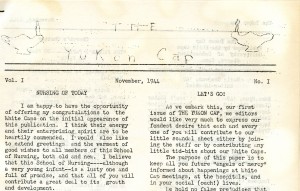

![capitolclose[1] United States Capitol](https://blogs.lib.uconn.edu/archives/files/2013/01/capitolclose11-225x300.jpg)
